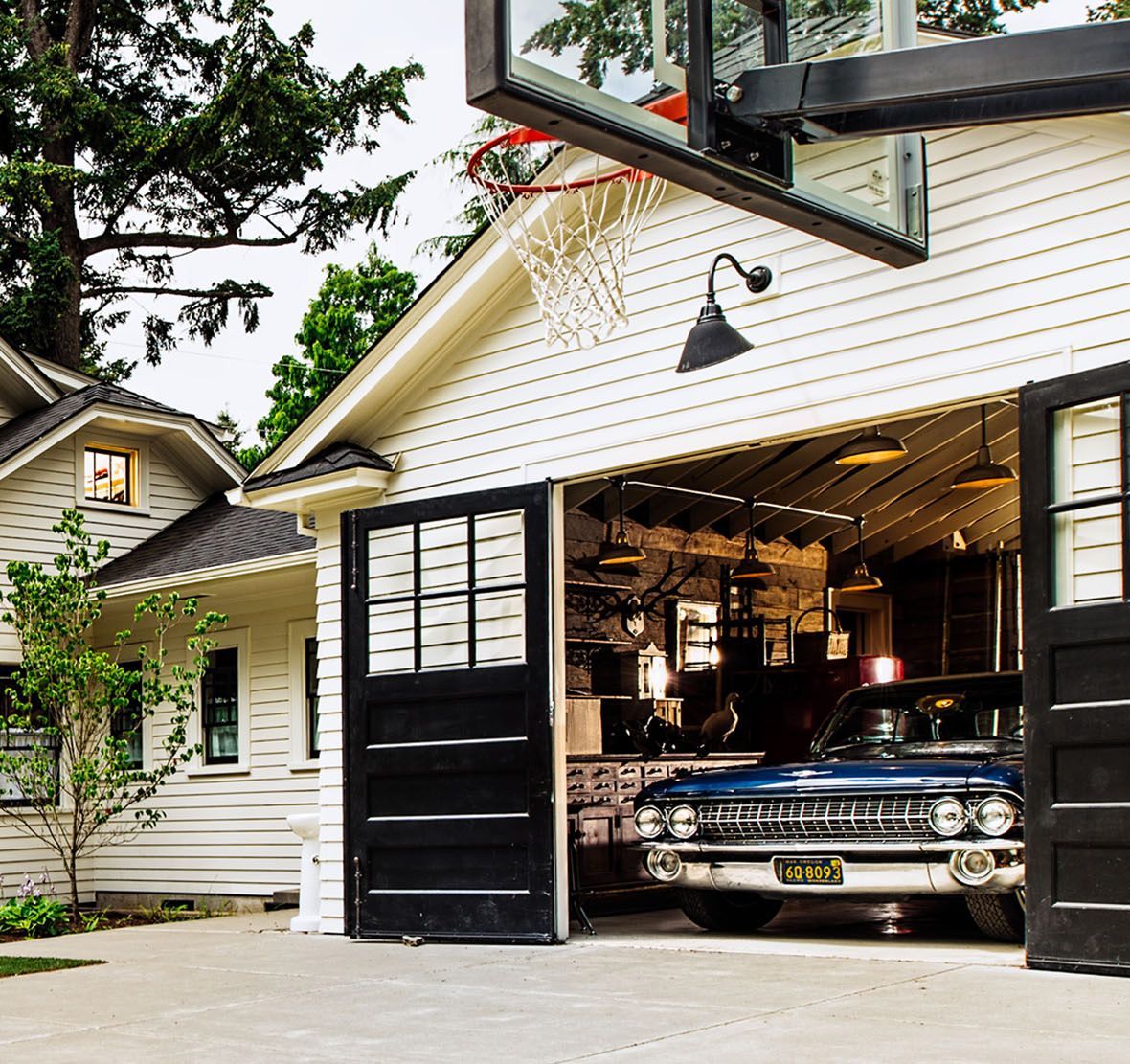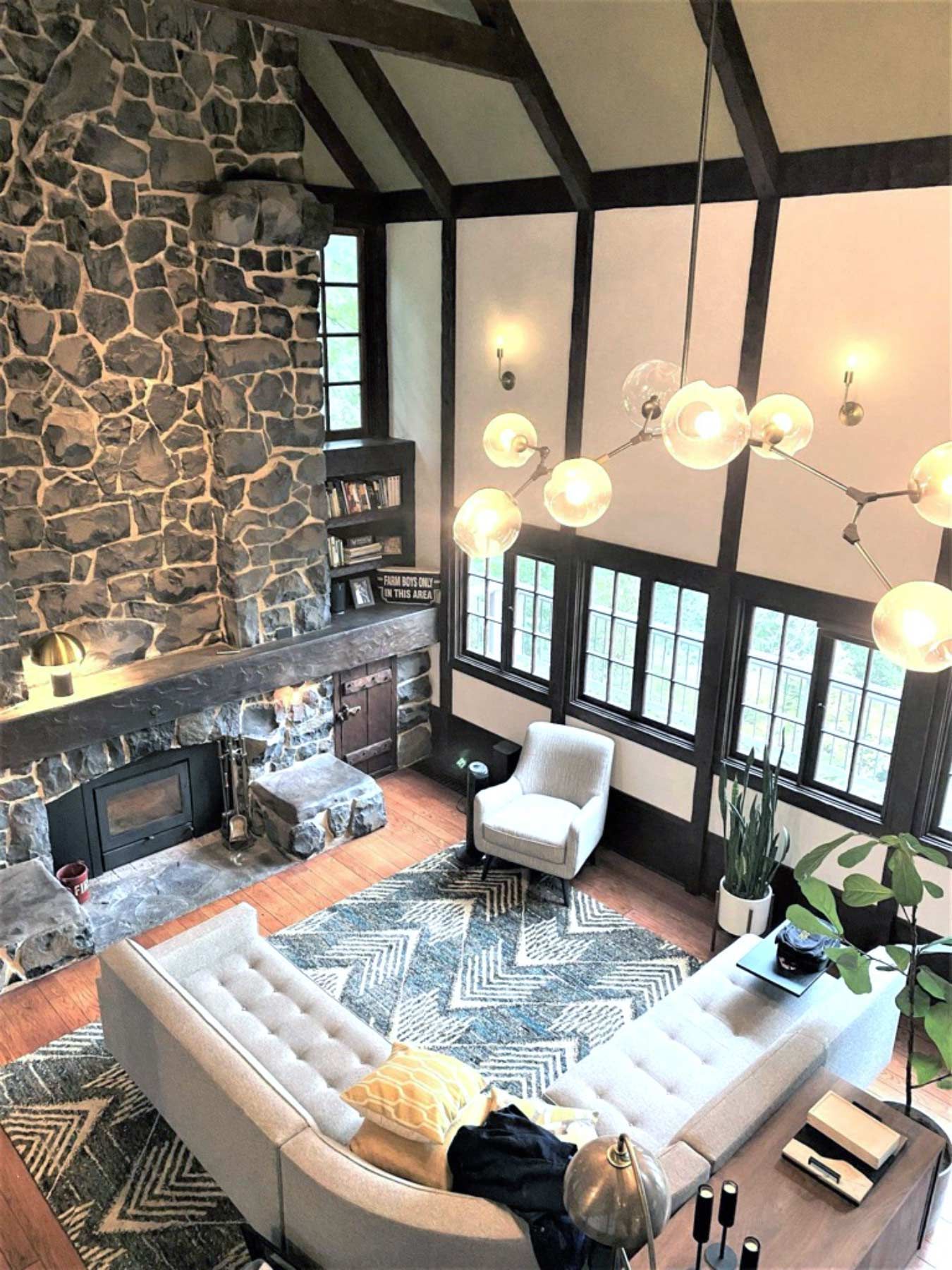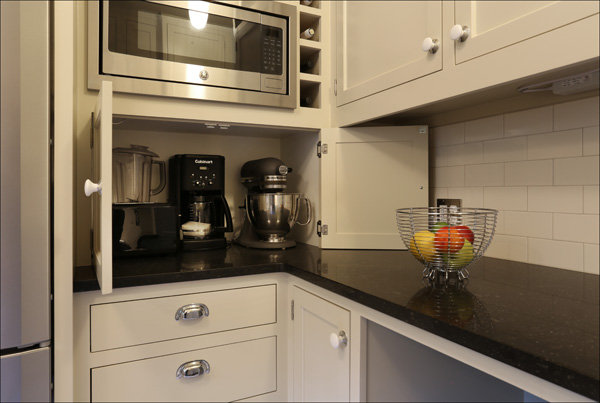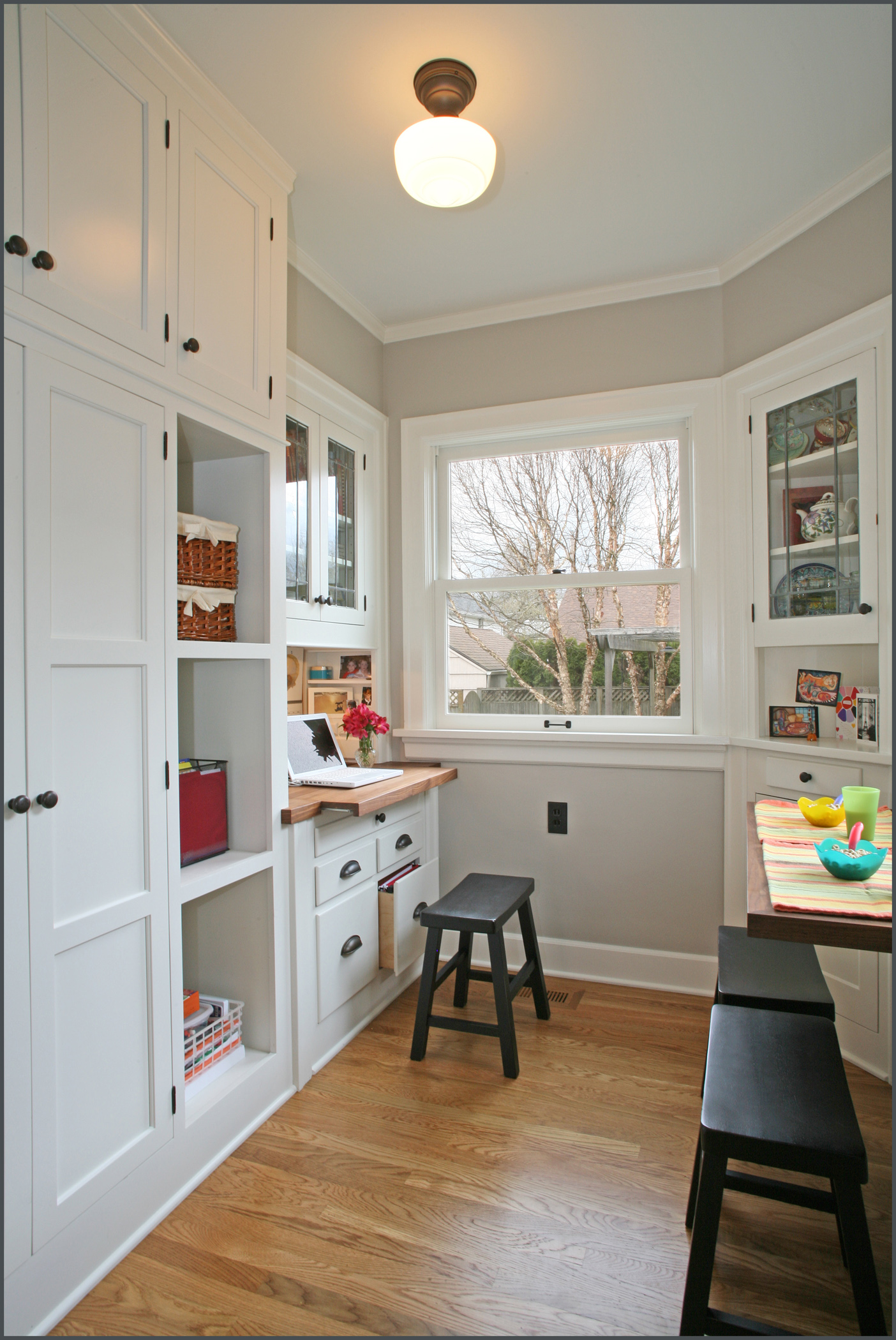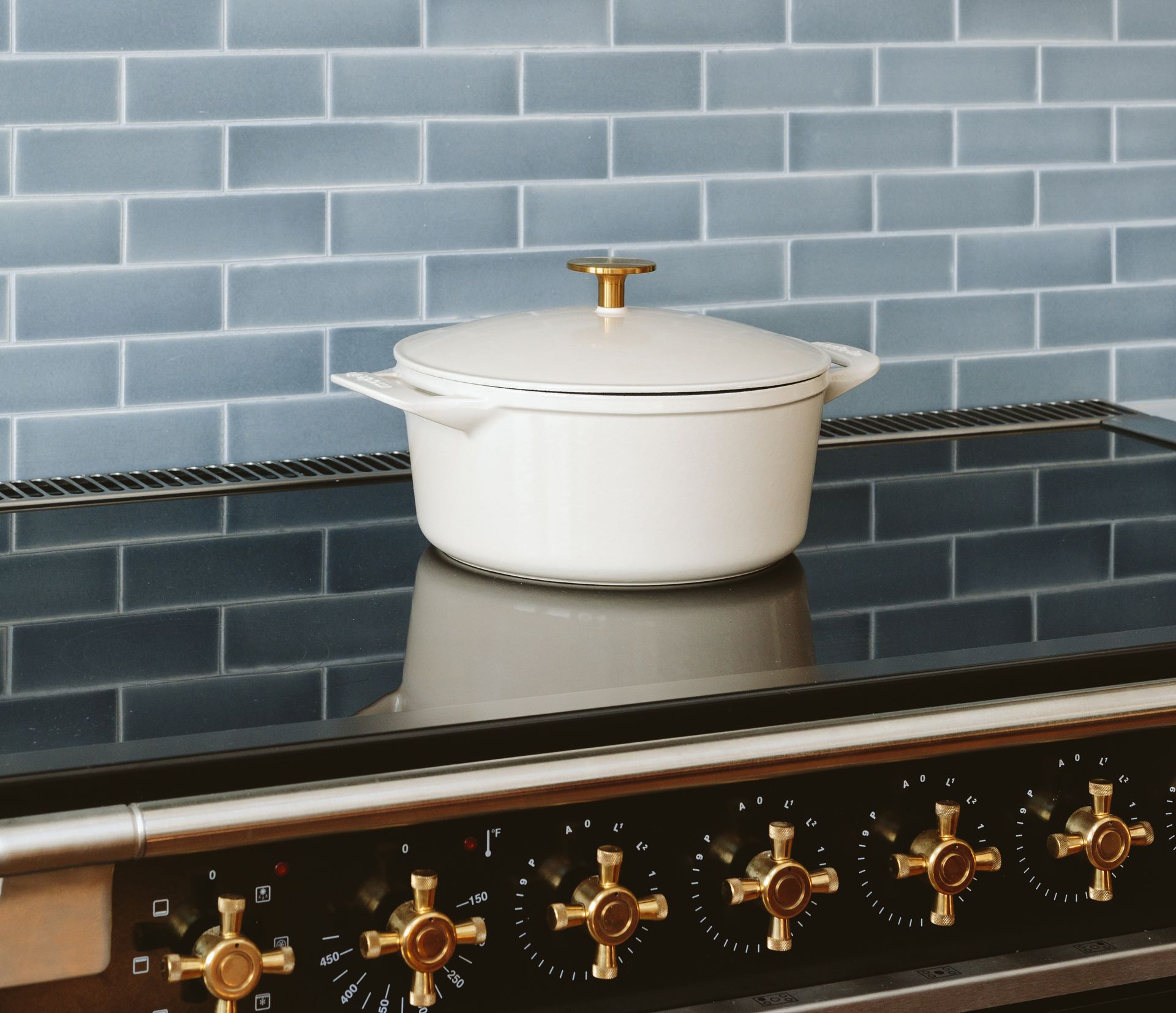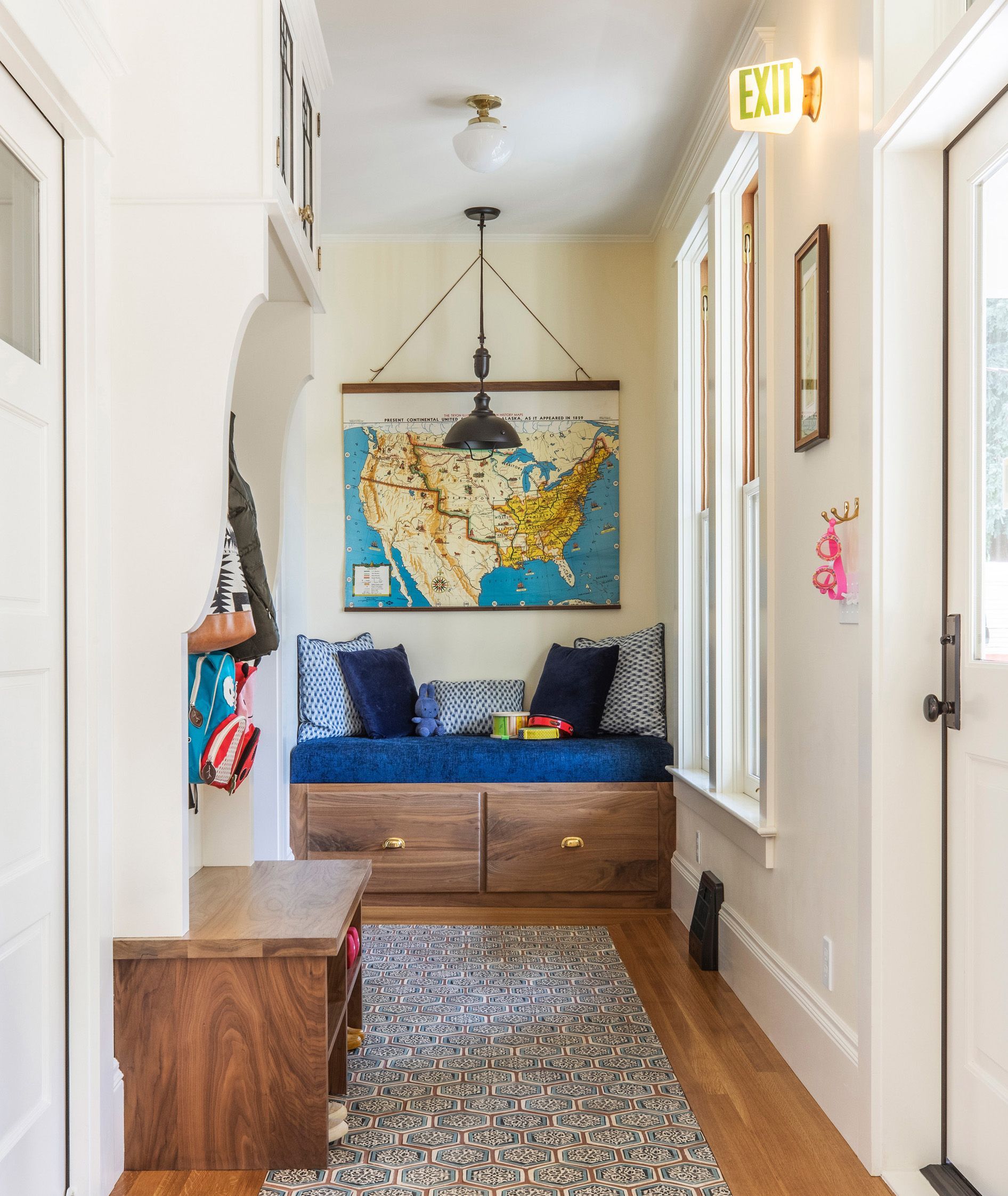Kitchen Confidential: 5 Hidden Conveniences for Your Kitchen
Sometimes, the thing you love most about your kitchen is completely invisible to the casual guest in your home. These little conveniences can help make your kitchen a pleasure to live and work in.
Here are 5 Hidden Conveniences to Consider for Your Kitchen Project
1. Build In Space for Breakfast… and Business.
(This kitchen and its cleverly convenient nook was designed by Arciform owner and Senior Designer Anne De Wolf.)
This small pantry area reclaimed space off of our client’s kitchen, adding storage and allowing the main kitchen to feel more open. Once the built in cabinets were added, however, the remaining footprint was small and the client still needed space for a work desk and a breakfast area.
The solution: A laptop desk that cleverly slides out from the work station (above left) and a breakfast bar that drops down to tuck out of the walkway when not in use (below).
2. Electrify Your Island.
(This kitchen renovation was for the historic Barnes Mansion, which is featured as the “Haunted Mansion” in Beverly Cleary’s Ramona Quimby books. The kitchen was designed by Arciform owner and senior designer Anne De Wolf.)
This client’s Historic Register home needed a kitchen island that would fit the elegant and timeless aesthetic of the rest of the space. She also needed to be able to plug her mixer and other small appliances in without dragging a cord across the large kitchen.
The solution: A custom built island with turned legs that creates a furniture-like look AND cleverly hides the cords for the electric outlet inside a hollow leg.
3. Tuck Trays (and Technology) into Your Toe Kicks.

(These custom cabinets were designed by Arciform Senior Designer Chelly Wentworth
and are being built by our sister company Versatile Wood Products
for use on a kitchen project being completed this summer.)
Make every inch of your custom kitchen work a bit harder by installing drawers into your toe kicks. This recessed portion of the cabinet by the floor is often wasted space, but a shallow drawer tucked into your toe kick is a great place to store cookie sheets and platters (or even the good silverware.)
Or take it a step further (if you’ll forgive the pun) and invest in one of these very cool Scalimera toe kick step stools that automatically pop out and unfold themselves when you kick them. You can check out a video of these nifty little numbers in action here.

(We’ll be installing one of these into the toe kick of another Historic Register home
designed by Ellis Lawrence that is currently undergoing a kitchen renovation designed by Arciform Senior Designer Kristyn Bester.)
4. Slip Spices into a Secret Cabinet.
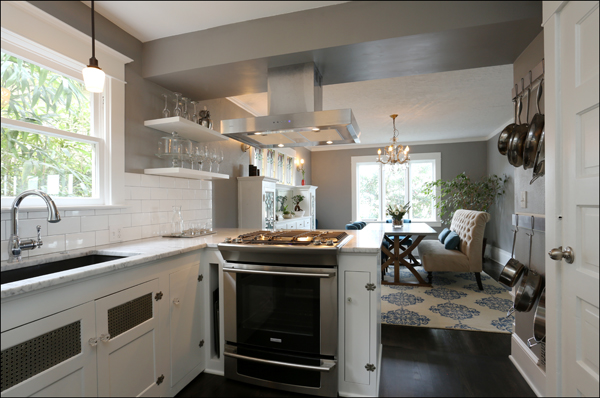
(Arciform Senior Designer Chelly Wentworth
helped our Kitchen Makeover winners
transform their kitchen from dingy and difficult to uncluttered and utterly charming.)
The biggest design challenge faced in the design for our Portland Monthly Kitchen Makeover winner was how to tuck in storage wherever we could into a kitchen with a very small footprint and very limited cabinet space. The lower cabinets were in great shape and had orignial 1930s era mesh inset cabinet doors with charming vintage hardware. How could we help this couple keep the charming elements of their current kitchen and add easy access to their spices and cooking oils without cluttering up their extremely limited counter space?
The solution: Carve out pockets of space to the left and right of their range for cookie sheet storage and a pull out spice rack that tucks back behind a narrow door when not in use. Salvage butterfly hinges were found to match the charming details on the rest of the cabinets to make the secret spice drawer feel like it was always there.
5. Hide the Pantry in Plain Sight.
(This kitchen renovation is part of a whole house remodel designed by Arciform owner and Senior Designer Anne De Wolf.)
This kitchen renovation in a Sellwood Victorian was designed to be a simple space that opened directly onto the family’s main living space. The main kitchen footprint would be small, efficient and open, with no upper cabinets to store typical serving items and pantry essentials. How would this busy family of four fit their day to day groceries into the space?
The solution: A bit of unused space adjacent to the downstairs powder room was converted into a pantry. Dishes and attractive serving items are displayed on open shelving and backed by custom built divided lite windows that create an old fashioned small town grocery store feeling. Day to day pantry items are stored on shelving tucked into the nook behind the windows, making them easy to access but largely invisible to casual users of the space.
See More Stories
